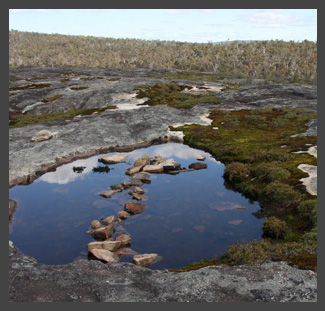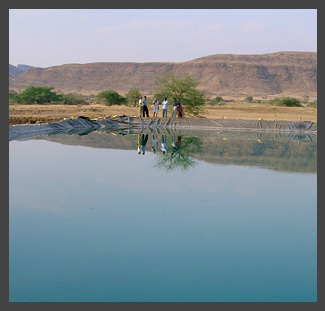Ground Catchment
Open reservoirs can be used to capture rainwater runoff for agriculture or domestic use and for recharging an aquifer. Oftentimes these natural reservoirs are the cheapest option for water storage. However, modifications can be made to increase volumes or gain access to the water. Small dams can be built or linings (to prevent infiltration) can be added. Diversions can also be created to send water to crops or nearby villages. For additional expense, underground tanks can be built in a runoff basin, which can be made with an increased depth to width ratio (more deep than wide), which means less evaporation losses overall.
Climate change considerations
Less rainfall and longer dry periods mean reduced soil moisture for crops. Groundwater recharge may be reduced if infiltration decreases. Many near-coast aquifers will be at risk from salt water intrusion as a result of sea level rise. Ponds, tanks, and reservoirs may not fill enough to support agriculture, or may be damaged by extreme floods. Larger more intense floods could also cause catastrophic, large dam failures. Open water reservoirs could create breeding grounds for mosquitoes, which can lead to increased malaria and water-borne diseases. Therefore, smaller reservoirs help reduce risk and expense.
| Ground Catchment and Storage | ||
|---|---|---|
Ground catchment and storage links
- Small Reservoirs Project.
- Rainwater Harvesting and Utilisation. Blue Drop Series: Book 2: Beneficiaries & Capacity Builders. UN-HABITAT.
Acknowledgements
- Flexible water storage options and adaptation to climate change. International Water Management Institute (IWMI). Issue 31, 2009.



